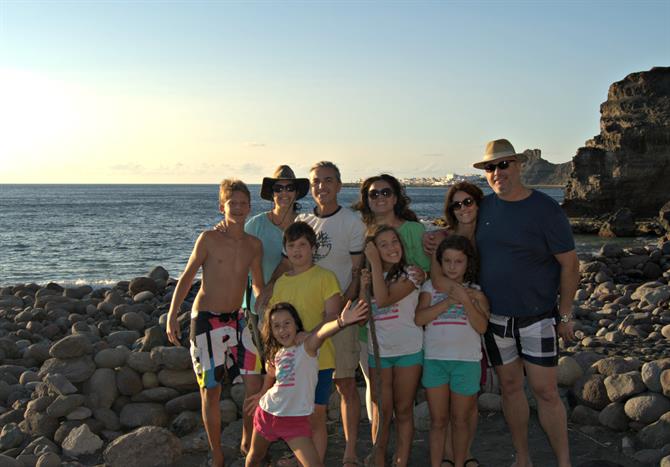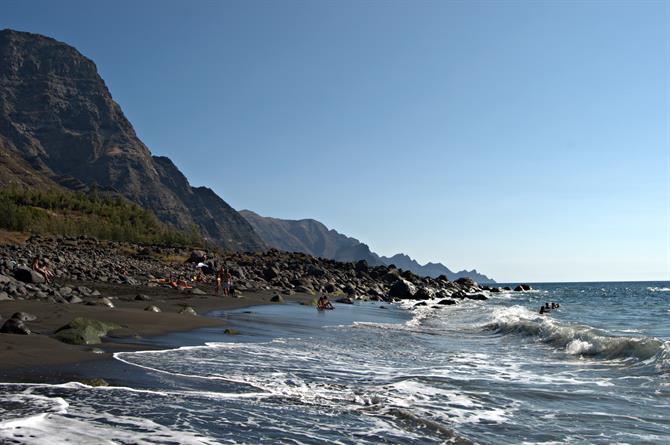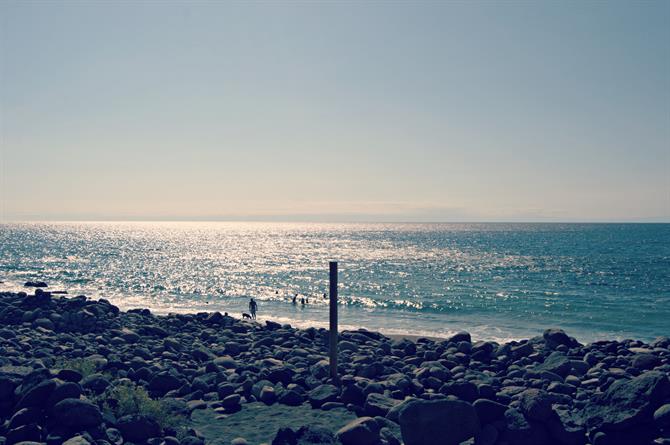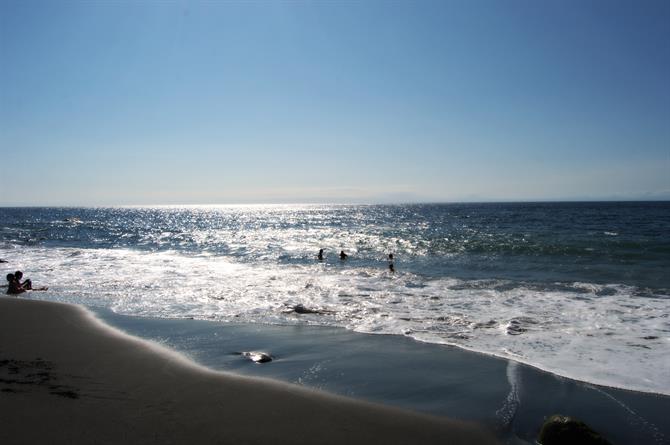The municipality of Agaete has eight beaches, ranging from the urban Las Nieves to the virgin Farenoque. The rustic Guayedra, 200 metres long, is our new family favourite. Allow me to explain why.
Family matters on Guayedra

After my in-laws heard and, indeed, read of our adventure on Playa del Juncal, they asked me to take them to another beach they hadn't yet visited. I racked my brains before suggesting Guayedra, a beach I'd previously hiked to from Agaete. Instead of travelling in convoy, we arranged to meet up there.
True to form, we were the last to arrive. Waiting for myself, my wife, Dani, and Alex were two brother-in-laws and their families. Mario was joined by wife Melania and daughter Ana whilst Victor brought along his missus Monica and daughters Claudia and Esther (yes, Mini Monica).
Guayedra, a beach less travelled

A beach that I'd earlier introduced my Gran Canaria family to was El Puertillo. Whilst they loved its proximity to Las Palmas de Gran Canaria, city to shore roughly 11 minutes, they were less keen on its weekend popularity. And as working people, Saturday and Sunday are their designated beach days.
So, I'm glad to say that us parents looked back at the packed Las Nieves in delight. Instead of jostling for room, we had plenty to enjoy our bocadillos de tortilla (Spanish-omelette rolls). Which we washed down with pride of the locals, Tropical beer.
Blue Guayedra

Blue is indeed the colour at Playa de Guayedra. Will you just look at that sky and sea? It's tones like that which make a photograph of Guayedra beach ideal for a desktop screensaver.
There's another way in which Playa de Guayedra can be considered blue. And that's because it's also a nudist beach. Naturists tend to base themselves at the far right of the playa, although we did see one couple in the middle and one guy as we entered from the left.
Guayedra, the bare facts

To get to Guayedra, we took the GC-2 from Las Palmas de Gran Canaria to Agaete. From here, we continued along the GC-200 to La Aldea de San Nicolás for around five km before turning off.
The journey time was 40 minutes. You park your car in the ravine from which the beach takes its name, before reaching your ultimate destination by foot in around quarter an hour. Ignore the stony beach you encounter first, following the path to the right which will bring you to a playa that's both rocky and sandy.
Be aware that Guayedra can be a windy beach. The waves can be powerful, so it's best you enter the water between rocks rather than next to them. Look out for the lizards which we fed with tomato, knowing they loved it, and watermelon, which we tried as an experiment. Guess what? They lapped it up.
